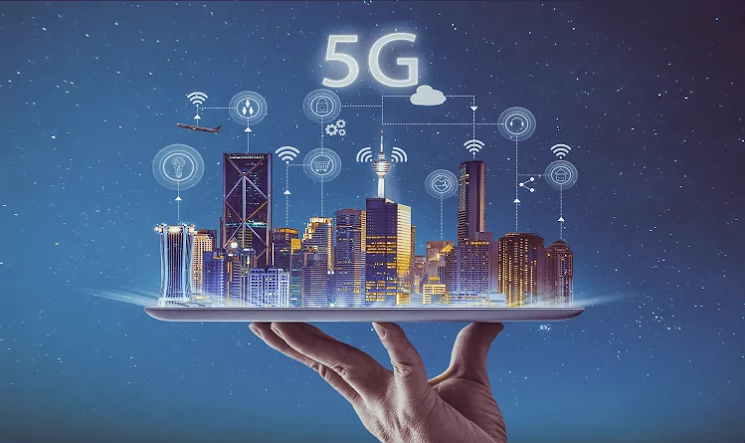 |
| 5G and Its Impact on IoT: Revolutionizing Connectivity |
In the ever-evolving landscape of technology, two of the most transformative developments of recent years are the advent of 5G networks and the proliferation of the Internet of Things (IoT). When these two trends intersect, a new realm of possibilities emerges, promising to reshape the way we live, work, and interact with our surroundings. In this blog, we will explore the profound impact of 5G on IoT, delving into the opportunities it presents, the challenges it poses, and the potential it holds for the future.
Understanding 5G: A Quantum Leap in Connectivity
Before diving into the world of IoT, it's crucial to understand the capabilities of 5G networks. The "5G" in 5G networks stands for the fifth generation of wireless technology, and it represents a significant leap forward from its predecessor, 4G LTE. Some key characteristics of 5G include:
Ultra-High Speed: 5G networks can offer speeds up to 20 gigabits per second (Gbps), which is exponentially faster than 4G. This speed facilitates real-time data transmission and lowers latency, making it ideal for applications that demand instant responses.
Low Latency: With latency as low as one millisecond or less, 5G enables near-instantaneous communication between devices. This is a game-changer for IoT applications that require split-second decision-making, such as autonomous vehicles and remote surgery.
Massive Device Connectivity: 5G can support a massive number of devices per square kilometer (up to one million devices), making it a perfect match for IoT's vision of a connected world.
Reliability: The reliability and consistency of 5G networks make it suitable for mission-critical applications, ensuring that data is always accessible when needed.
Now, let's explore how these features of 5G are revolutionizing IoT.
 |
| IoT refers to the interconnectedness of everyday |
IoT and 5G: A Symbiotic Relationship
IoT refers to the interconnectedness of everyday objects and devices through the internet, allowing them to collect, exchange, and act on data without human intervention. While IoT has been steadily growing, the limitations of previous network generations posed significant challenges. 5G, however, provides IoT with a robust foundation for expansion:
Enhanced Data Transmission: The high-speed, low-latency capabilities of 5G allow IoT devices to transmit large volumes of data quickly and reliably. This is especially vital for applications like smart cities, where sensors collect and share data on traffic, pollution, and energy consumption in real time.
Improved Energy Efficiency: Many IoT devices are battery-powered, and 5G's efficiency ensures they can remain connected longer without draining their batteries quickly. This is crucial for remote sensors and devices in industrial settings.
Real-Time Decision-Making: 5G's low latency empowers IoT devices to make instant decisions. For autonomous vehicles, for example, this means faster response times and safer driving.
Remote Control: With 5G, you can remotely control devices and machinery with precision, enabling applications like telemedicine and remote industrial operations. Surgeons can perform surgeries from miles away, and factory managers can monitor and control equipment in real time.
Scalability: The ability to connect a massive number of devices per square kilometer makes 5G perfect for IoT's growth. This scalability opens doors for new applications, from smart agriculture to connected appliances in homes.
Challenges and Considerations
While the potential benefits of 5G for IoT are immense, several challenges and considerations must be addressed:
Infrastructure Deployment: Implementing 5G infrastructure worldwide is a massive undertaking, requiring substantial investments and regulatory approvals.
Security: With more devices connected, the attack surface for cyber threats grows. Ensuring the security of IoT devices and networks is paramount.
Privacy: The vast amount of data generated by IoT devices raises privacy concerns. Striking a balance between innovation and data protection is crucial.
Interoperability: To realize the full potential of IoT, devices and platforms must be able to work together seamlessly. Standards and protocols need to be established for this purpose.
 |
| 5G's impact on IoT is still in its infancy |
The Future of IoT with 5G
5G's impact on IoT is still in its infancy, and the possibilities it presents are limited only by our imagination. As 5G networks continue to roll out globally and IoT devices become more ubiquitous, we can expect to see remarkable advancements in various sectors:
Healthcare: Telemedicine, remote patient monitoring, and even remote surgery will become more commonplace, improving access to healthcare.
Smart Cities: Urban areas will harness IoT and 5G to optimize traffic management, reduce energy consumption, and enhance public safety.
Industry 4.0: Manufacturing and industrial processes will become more efficient and autonomous, thanks to real-time data analytics and control.
Agriculture: Precision agriculture will benefit from IoT sensors that monitor soil conditions, weather, and crop health, leading to higher yields and resource conservation.
Smart Homes: Everyday life will become more convenient and energy-efficient as household devices communicate seamlessly, adapting to user preferences.
In conclusion, the synergy between 5G and IoT promises to usher in an era of unparalleled connectivity and innovation. As these technologies continue to mature and evolve, their combined impact on our lives and society will be nothing short of transformative. The future is not just connected; it's intelligent, efficient, and filled with possibilities
 |
| 5G's impact on IoT is still in its infancy, and the possibilities |


.jpeg)




.png)
0 Comments